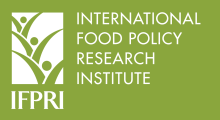Resource information
Recently scientists have started to examine how land-uses and land-use technologies can help mitigate carbon emissions. The half million small-scale farmers inhabiting the Amazon frontier sequester large stocks of carbon in their forests and other land uses that they might be persuaded to maintain or even increase through the Clean Development Mechanism (CDM) of the Kyoto Protocol. On average, small-scale farmers in the Pedro Peixoto settlement project of Acre (Western Brazilian Amazon), had a stock of 10,067 tons of above- and below-ground carbon on their farms in 1994, 88 percent of which was stored in their forest reserves. The income and carbon mitigation effects of three types of carbon payments are analyzed in this paper: (1) above- or total-carbon stock payments paid for carbon retained in the forest or stored in all land-uses, (2) above- or total-carbon flow payments paid for carbon stored in all land-uses, and (3) above- or total-carbon net stock payments paid for carbon stored in all land-uses. The main conclusions are that carbon payments can be effective in preserving forest and carbon, but should be based on carbon stocks or net carbon stock rather than carbon flows. Payments tied to forest carbon or carbon in all land-uses provide inexpensive carbon offset potential, and payments based on total instead of above-ground carbon only slightly dilute the forest preservation effect of carbon payments. One-time carbon payments as low as R$15/t of carbon stock would preserve half of the existing forest carbon on these farms. Carbon flow payments, on the other hand, do not provide an adequate economic incentive to slow deforestation because forests are more or less in equilibrium and thus do not sequester additional carbon. If the Kyoto Protocol were amended to allow for conservation of forest carbon, a few potential CDMs could provide inexpensive carbon offsets, alleviate poverty, and preserve biodiversity. Sustainable forest management, for instance, increases both farm income and carbon and forest preservation and could provide inexpensive carbon offsets. Other projects could also provide inexpensive carbon offsets and preserve biodiversity, but would require additional income and technology transfers to compensate farmers for their lost incomes.


